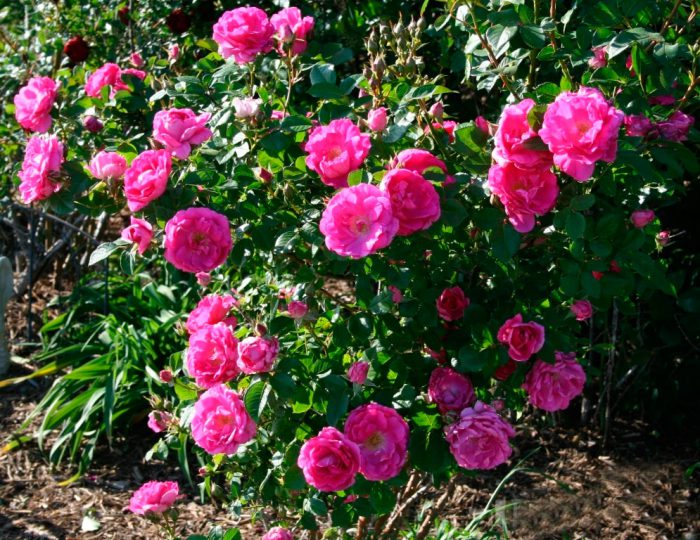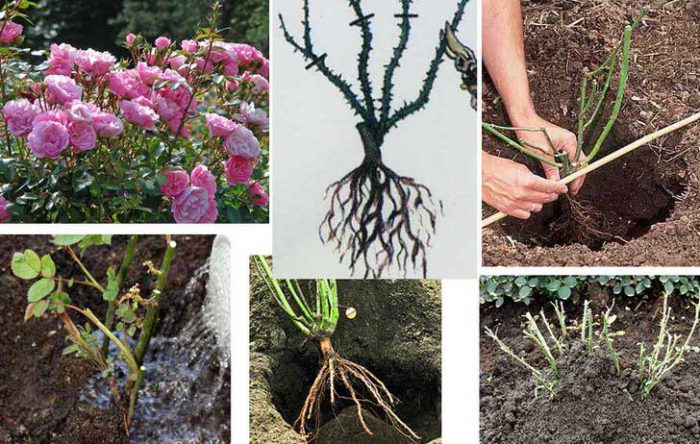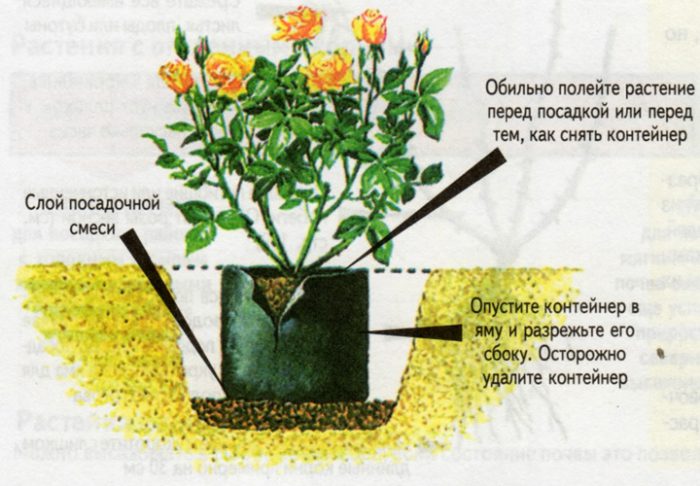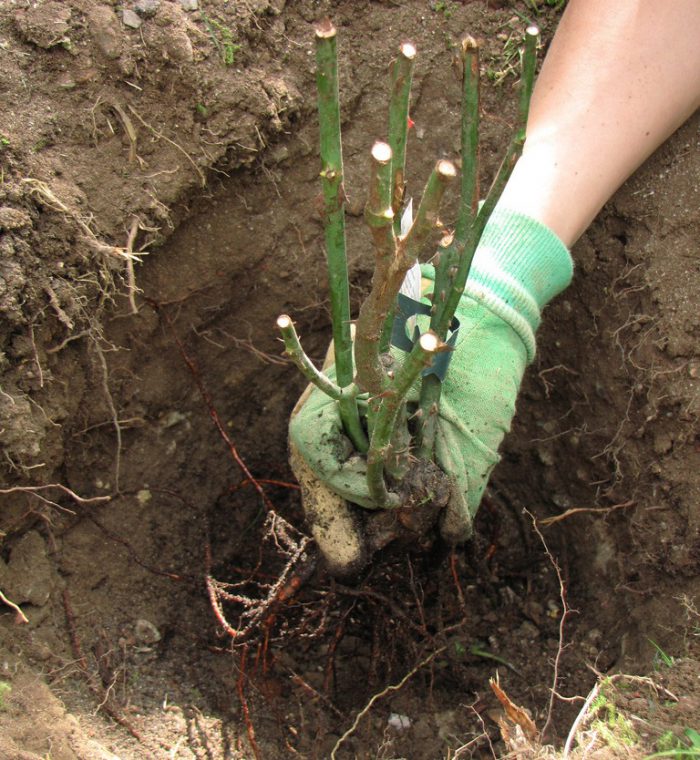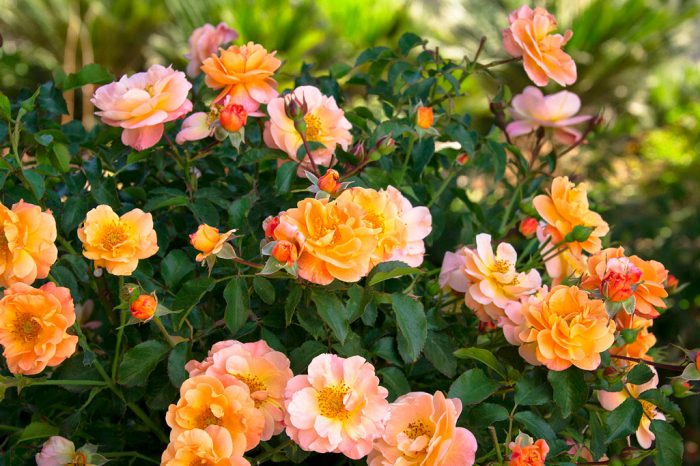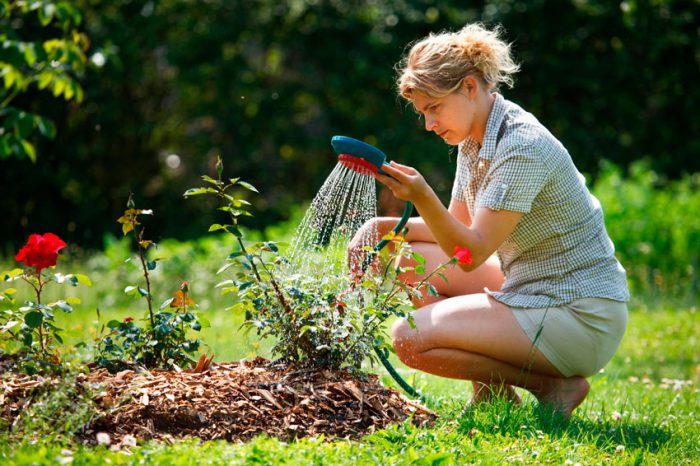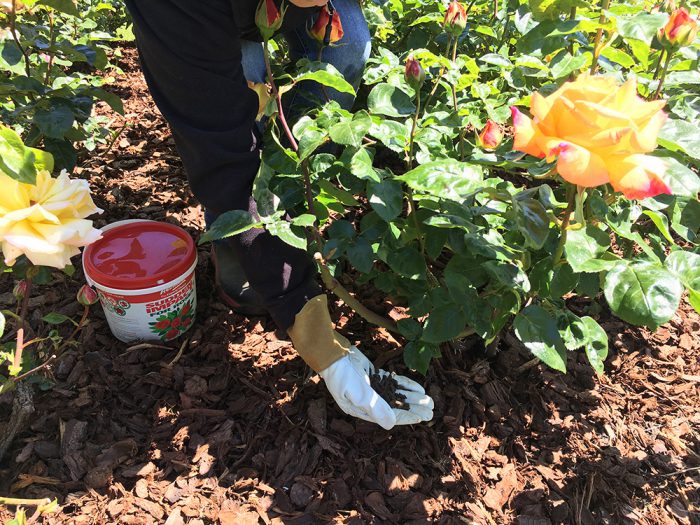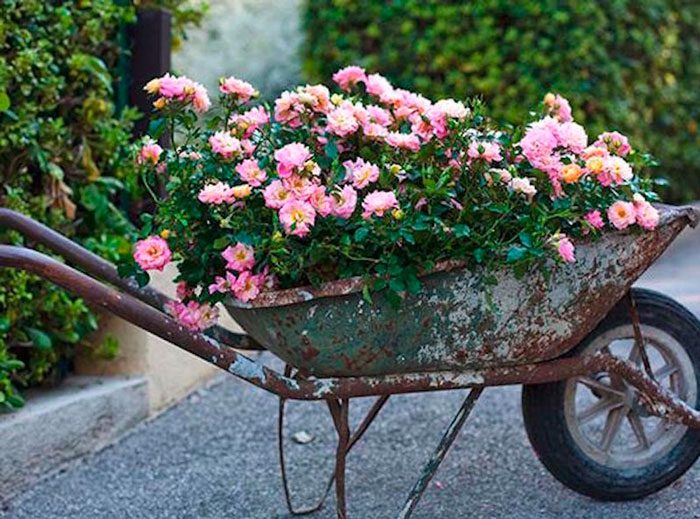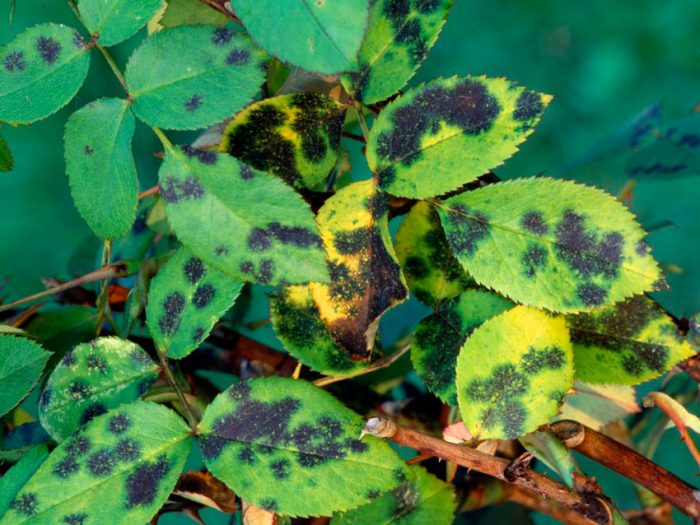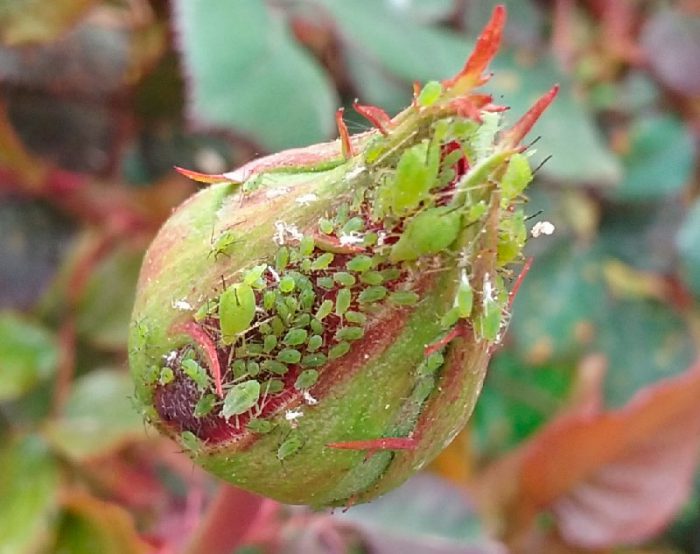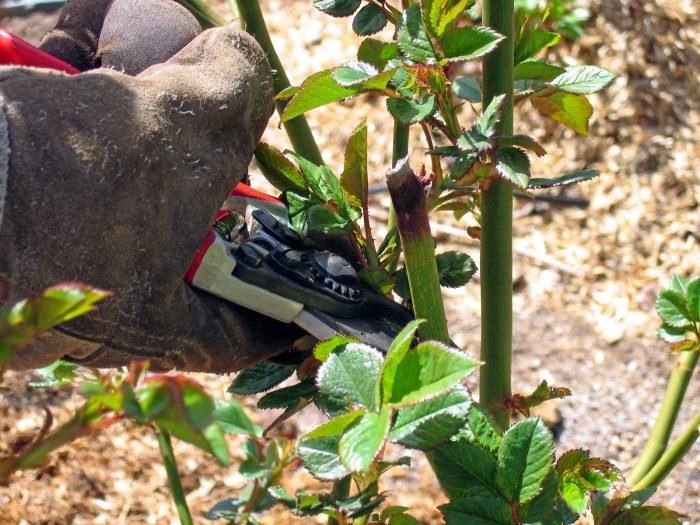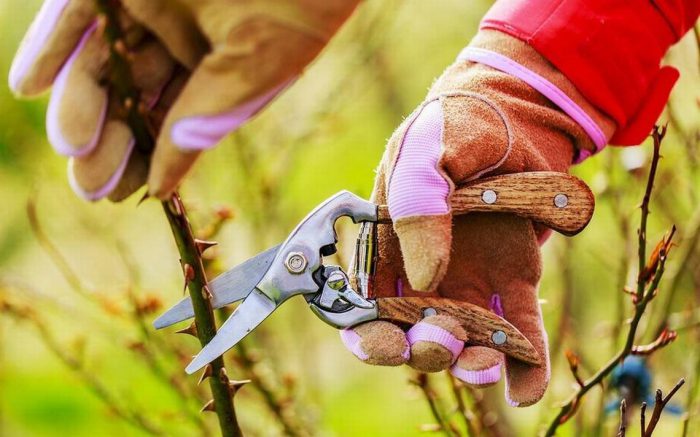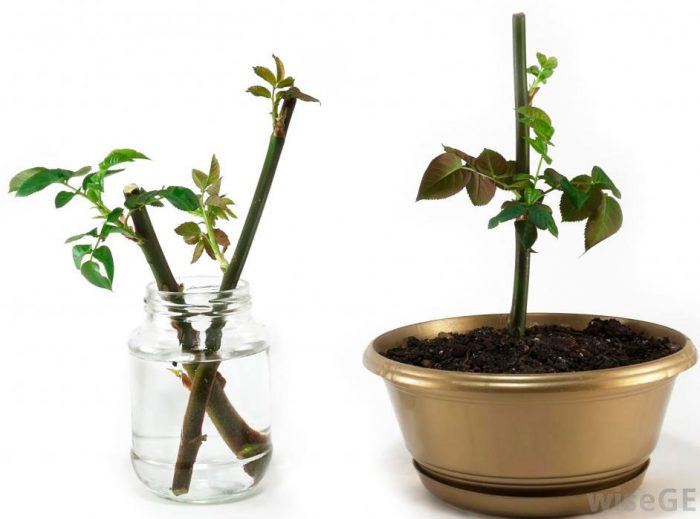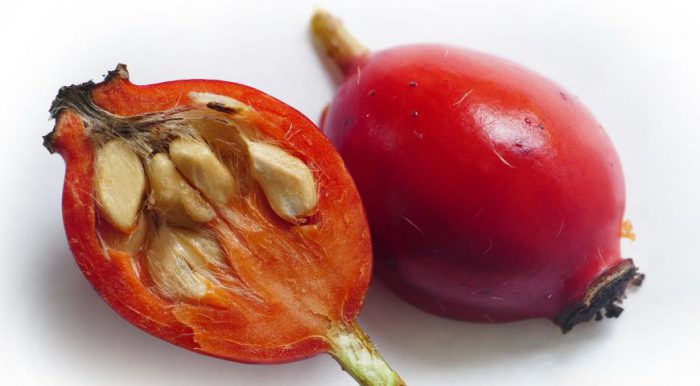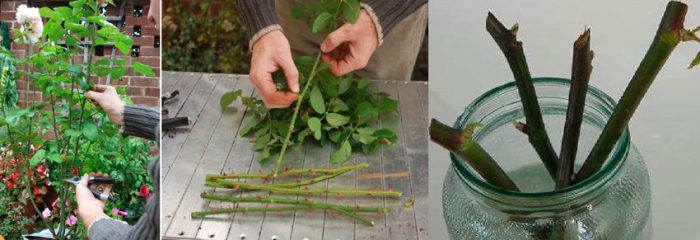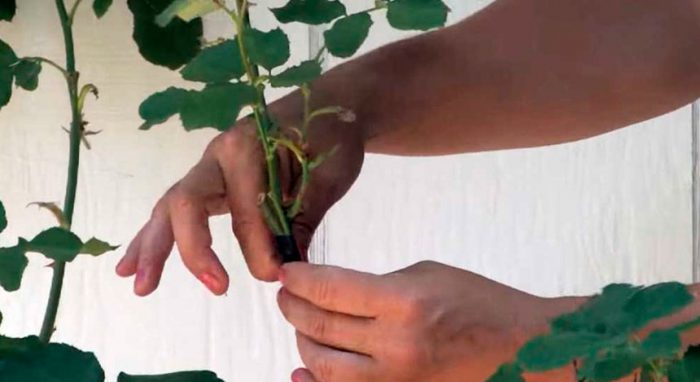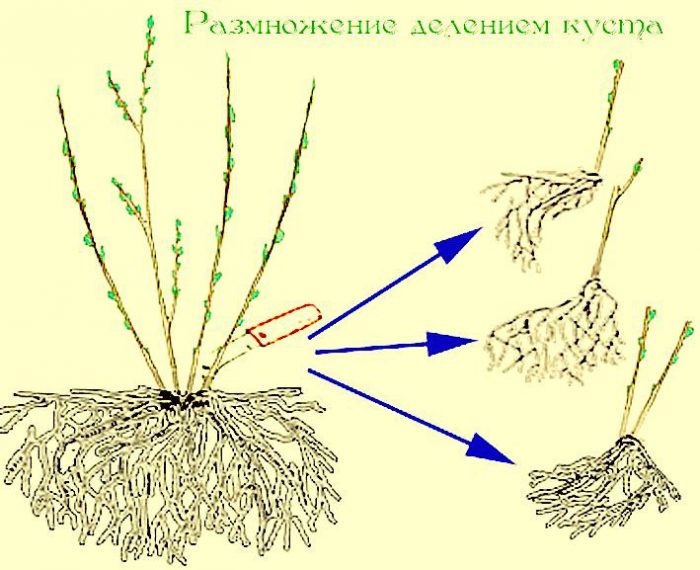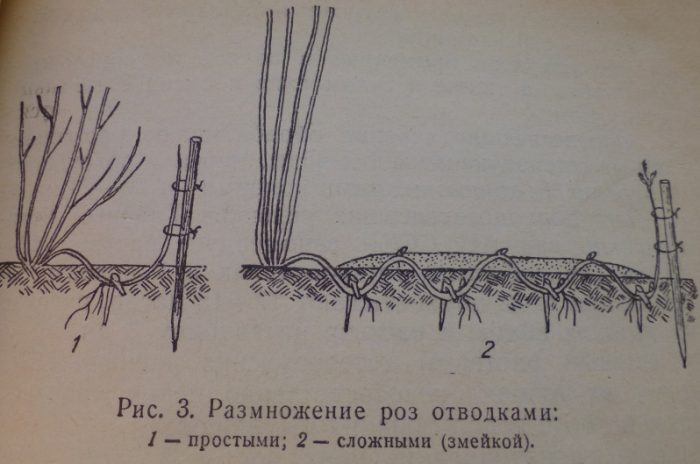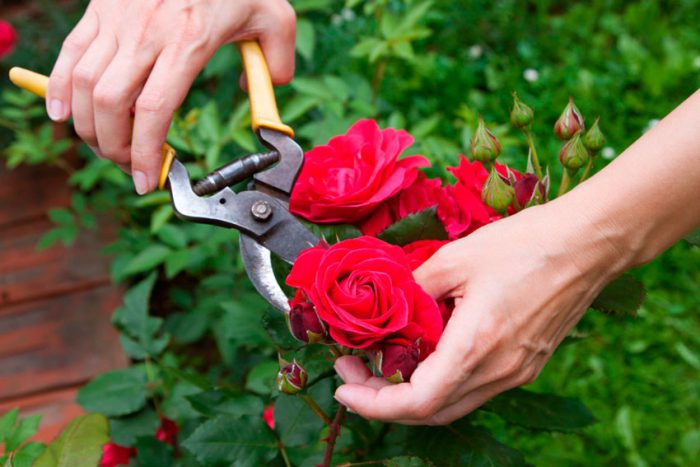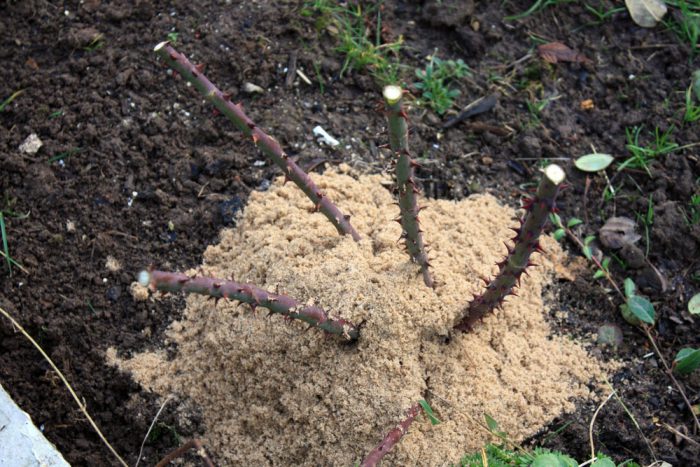Shrub roses belong to the genus of rose hips, which appeared on Earth about 40 million years ago. Today, this genus unites about 250 species of various plants and more than 200 thousand varieties. At first, the rose was called the ancient Persian word "wrodon", then in the Greek language it was called "rhodon". Later this word was transformed by the Romans into "rosa". In temperate and warm regions of the Northern Hemisphere, roses can be found in the wild, they are not inferior in beauty and excellent aroma to garden forms. Today, gardeners grow a variety of varieties and hybrids of this plant, which are distinguished by the amazing beauty of the flowers. They are especially popular not only among flower growers, gardeners and landscape designers, but also among all lovers of beauty. Despite the fact that roses have an incredibly beautiful appearance, they are very easy to grow. This explains their widespread use in green building. There are the following types of cultivated roses: garden and park. The following groups are most popular among garden roses: hybrid tea, grandiflora, climbing, ground cover, bush, floribunda, polyanthus, and also miniature. Below will be described in detail about spray roses.
Content
Features of spray roses
Bushes of this type of rose can have a very different shape, directly depending on the variety - from spreading to narrow pyramidal. Also, the height of the bush depends on the type and variety, which can vary from 25 to 300 centimeters (and even more). The branches of the bushes of such plants are divided into 2 types, namely, annual stems and uterine (main) stems. Unpaired leaf plates have elliptical or ovoid leaflets with a serrated edge. They also have 2 leaf-like stipules.
The peduncle of such plants can be 10–80 centimeters long, while the diameter of the flowers varies from 2 to 18 centimeters. The incredibly beautiful rose flowers can have a wide variety of shapes and colors. Flowers, as a rule, consist of 5-120 petals.There are both single flowers and those included in the inflorescences (3–200 pieces). In shape, flowers are distinguished pompom, cone-shaped, saucer-shaped, peony-shaped, cup-shaped, flat, spherical and others. The color of roses can be very different, so today there are no flowers only of deep blue color. Thanks to the work of breeders, a huge variety of varieties and hybrids of roses have appeared, which can be painted in a variety of color shades and their combinations, while the "list" is constantly growing. Of course, the blossoming rose flowers are an amazing sight. And even the most sophisticated connoisseur of beauty can be delighted with roses, which change their color during flowering. Also, these flowers are distinguished by a wide variety of aromas.
Features of growing spray roses in the garden
No wonder the rose is called the "queen of flowers". If you want to have a fragrant rose bush in your garden, then for this you just need to know some features and tricks in caring for it. So, in order for this plant to grow and develop normally in your garden, you need to know that:
- Shrub roses are distinguished by a relatively high frost resistance, but this does not mean at all that they do not need preparation for wintering. In this case, it is worth considering the fact that these flowers are usually large enough, and therefore the gardener will have to make an effort in order to properly wrap the bush. So, for example, a floribunda rose or a hybrid tea has a slightly smaller size.
- This plant is not very demanding to care for, as they usually say about it. However, it should be borne in mind that he simply needs annual formative pruning of the stems, as well as sanitary ones.
- In the autumn, be sure to carry out the procedure for pruning re-flowering bushes.
- It should be remembered that there are a large number of rather sharp thorns on the stems.
- The bushes of such a plant are spreading and have an extremely spectacular appearance. A shrub rose is often used to form a hedge, and can also be grown as a single plant.
How to plant a rose
What time is a rose planting
Experts advise planting bush roses exclusively in the autumn, from the beginning of September to the second half of October. It is recommended to purchase planting material shortly before planting, and not in the spring. The fact is that in spring, as a rule, they sell planting material that was not sold out last fall. When purchasing seedlings, you need to be extremely careful and make a thorough inspection. It is worth buying only those seedlings that look the most powerful and do not show signs of disease.
After you purchase quality planting material, you will need to choose the most suitable planting site. Such a plant is photophilous. The optimal place for planting it will be one that is located away from bushes and trees, which has good illumination, but at the same time is in shade at lunchtime. In this area, bushes will grow that will look simply luxurious, while their flowering will last for a relatively long time, and the flowers will not lose their color saturation. It should also be borne in mind that the place for planting a rose should not be in a lowland, it is also better if the groundwater is not located too close to the soil surface. It is also recommended to protect the bush from the wind blowing from the northeast or from the north. An area where roses have been grown for quite a long time is not suitable for planting. Slightly acidic (pH 6 to 6.5) soil that is well drained is best suited for these plants. It should also be borne in mind that the more nutritious the soil is, the more beautiful and magnificent the flowering of the bushes will be.
Landing rules
Before planting seedlings in open ground, they must be prepared. This is done just before landing. You will need a very sharp instrument that must be sterilized. With it, you need to trim the roots, while completely cutting off the dried ones, and also shorten the shoots to a height of 15 to 20 centimeters. Then the root system should be immersed in water for several hours and pulled out just before planting. Prepare a rounded fossa with a diameter of 40 to 50 centimeters. It should be remembered that the depth of the pit should be 10 centimeters higher than the height of the root system, measured together with a lump of earth. The bottom of the hole must be loosened using a pitchfork. In order to determine a more accurate depth of the planting hole, one should take into account the height at which the graft is located. So, after landing, it should be at a depth of 3-4 centimeters.
The soil that remains after digging the planting hole should be combined with compost (3: 1) and a handful of wood ash should also be poured into it. Dissolve 1 tablet of heteroauxin in 10 liters of water and pour the resulting solution into the hole. In order for the bushes to take root in a short time, they must be planted correctly. First, the plant itself must be lowered into the hole, and then gradually you need to fill it with soil, while holding the seedling by the stem. The soil needs to be compacted all the time. Around the bush, you need to make a circular roller at a distance of 30 centimeters from the stem, which will help the water not to spread during watering. Then you need to spud the seedling to a height of 15 centimeters and shade it from the sun's rays for 10 days. The second time it will be necessary to water the bush after two days.
In the event that a rose intended for planting in the garden grows in a container, a small amount of soil mixed with compost should be poured into the hole. Pour a lot of water into the container and lower it into the prepared hole. Carefully remove the container and then pour the required amount of soil into the hole. Then follow the instructions above.
The distance between the bushes directly depends on the variety of flowers and can vary from 100 to 200 centimeters. The same distance should be left in the aisles.
Autumn planting
When planting a bush rose in autumn, it is necessary to start preparing for this procedure 8 weeks in advance. In the event that the groundwater comes too close to the soil surface, then it is imperative to build a raised flower bed for roses. Otherwise, the root system of the plant will be almost constantly damp, and from this rot may appear on it, the bushes themselves will look unhealthy. Remember that the soil in the garden is ideal only in isolated cases, in this regard, it needs to be "corrected" so that it becomes suitable for growing a bush rose. Remember that how beautiful the bush you grow will be depends on the composition of the soil. During the digging of the soil, fertilizers and humus should be added to it. So, at 1 m2 a full ten-liter bucket of peat and garden compost (manure), a couple of glasses of wood ash and bone meal, and from 30 to 50 grams of superphosphate are taken from the site. Sand must be added to excessively clayey soil (1 m2 1 or 2 buckets). During landing, you must follow the rules described above. Bushes planted in autumn should be completely covered with soil for wintering.
Planting a rose in spring
In the event that the winter period is characterized by severe frosts, then planting a rose seedling can be done in spring. This is done from mid-April to the second half of May, it is necessary that the soil is warmed up to 10 degrees. It is recommended to prepare the above pit at least 4 weeks before disembarkation. It is necessary to trim too long roots and completely remove those that have dried, as well as diseased ones.It is necessary to cut the stems so that they are from 10 to 15 centimeters high and have at least 2-4 buds. In the case when the planting material has been stored for a long time, and its roots have dried up quite a bit, it is necessary to put them in the water the day before planting, and immediately before planting, immerse them in a clay-manure talker. A small part of the prepared soil should be poured into the hole with a slide (see above for how to do this). Then you need to put a seedling in it and hold it by the shoot with one hand, with the other you need to gradually pour the soil into the hole, not forgetting to constantly tamp it. Remember that the grafting site should be at a depth of 3 to 5 centimeters. When the seedling is planted, it should be watered well, and when the water is absorbed, then spud. After the first shoots appear, the soil that was used for hilling the bush must be removed. In this case, the surface of the soil around the bush should be sprinkled with a layer of mulch (humus or peat), the height of which should be about 5–8 centimeters. Pine bark or wood chips should be used as mulch for areas with non-renovated roses.
How to care for roses in the garden
Growing a rose
During the first year after planting a bush rose, you need to regularly pinch the ends of the stems in order for the bush to become more magnificent. Also, until mid-summer, you should pick off the buds immediately after they appear. The fact is that they are able to take away a large amount of strength from a fragile young bush. From the middle of the summer period, you should wait until the bud is fully formed, and then break it off. It should be noted that this type of rose is distinguished by its fast growth. In a relatively short time, it becomes a powerful bush and there are much fewer problems in growing with it than, for example, with a standard, room or climbing rose. In order for the rose to feel comfortable and healthy, it should be looked after following certain rules. In order for the plant to feel well and develop normally, it needs systematic watering and loosening of the soil surface, regular pruning of stems and removal of weeds, as well as timely feeding with suitable fertilizers.
How to water properly
Such plants are not very moisture-loving. Experts advise to water only if necessary, or rather, when the soil becomes completely dry. It should be remembered that watering should be infrequent, but rather abundant. However, newly planted bushes during the first year of life need to be watered every 2 days. In spring, they water more abundantly, as young stems and leaf plates begin to grow actively. In a dry hot summer period, the frequency of watering should be increased, while it is worth considering that for each rose bush you should use 1 full ten-liter bucket of water. Watering should be at the root and gently enough so as not to expose the plant's root system. Remember that you cannot water a bush rose with cold water. In the last days of the summer period, after the bush has faded, the amount of water used for irrigation is reduced. This will avoid stagnation of liquid in the soil, and protect the plant from the appearance of fungal diseases in the root system. However, before the winter period, it is imperative to soak the soil with water. Watering is recommended in the morning, before the heat begins, or in the evening, but it should be borne in mind that if droplets of liquid get on the leaf blades, they must evaporate before nightfall. Drip irrigation is recommended.
Fertilizer
It is necessary to feed a bush rose systematically. After the plant is planted, it is not necessary to feed it during the first year, but from the second year of life it is simply necessary to regularly apply fertilizers to the soil. Top dressing mode:
- the first (double feeding) - is done in spring at the very beginning of the period of active growth;
- the second - during the budding period;
- the third - when the plant fades;
- fourth - before the stems begin to lignify.
After the rose is pruned in spring, top dressing is performed, for this, 20 grams of ammonium nitrate and ammonium sulfate are taken per 1 square meter. After half a month, it is necessary to repeat the application of nitrogen-containing fertilizer. During budding, the following nutrient mixture is used to feed the rose: 30 grams of superphosphate, 20 to 30 grams of ammonium nitrate, 10 grams of potassium salt (per 1 square meter). It is possible to replace such nutrient mixtures used for feeding with Kemiroi Universal, while 30 to 40 grams of the substance are taken per 1 square meter. When the flowering ends, a complex fertilizer with trace elements is used for feeding. From the last days of July, it is necessary to stop feeding the bush with nitrogen-containing fertilizers. From August to September, superphosphate and potassium salt must be added to the soil, while 30-40 grams of fertilizer are taken per 1 square meter. If there is a desire, then you can feed spray roses alternately with organic or mineral fertilizers. It is recommended to use slurry, chicken manure or wood ash as organic fertilizers.
Transplant features
After some time after planting a bush rose, it must be transplanted. The fact is that over time it grows strongly and at the same time loses its attractive appearance. It is recommended to transplant a rose in April or October, while it is worth considering that in spring the plant tolerates this procedure much better than in autumn. Before proceeding with the transplant, you need to cut the bush by 20 centimeters, remove all weak or damaged branches, and rip off the existing leaves. It should be noted that in a grafted bush, the root system grows deeper. In the case when the rose is self-rooted, its roots are located relatively close to the soil surface. Taking into account these features of the plant, you need to pull the bush out of the ground using a shovel along with a lump of earth. If the peripheral roots are injured during the digging of the rose, then there is nothing to worry about. The fact is that after transplanting a bush to a new place, such roots will quickly recover. It is recommended to transfer the excavated root system to a large piece of sturdy cloth, which will facilitate its transfer to a new location. Moreover, if there is such a need, then when planting a rose, you can not remove the fabric, over time it will rot itself. A large amount of water should be poured into the prepared pit. Further, the transplant is carried out according to the same rules as planting a seedling. During planting, it should be borne in mind that in a grafted rose, the graft should be under the soil at a depth of 3 to 5 centimeters, and in a rooted bush, a clod of earth should be at the same level with the soil surface.
Diseases
Growing such plants in unsuitable conditions for them can lead to the fact that they become very weak and lose resistance to diseases, as well as various harmful insects can settle on them. Weakened plants are often infected with diseases such as: downy mildew (downy mildew), black spot (rose marsonina), powdery mildew, rust or chlorosis. In order to get rid of fungal diseases, you must use one of the following fungicidal agents: a suspension of colloidal sulfur (1%) or a solution of copper sulfate (3%). Chlorosis occurs due to the fact that the plant lacks some element, most often iron. A rose with chlorosis changes its color to yellow. In order to find out which element is missing, it will be necessary to conduct a soil analysis.After that, you need to add the soil, the missing element to the rose in the form of salts in the recommended dosage.
Pests
A variety of pests can settle on a bush rose, which are divided into sucking and gnawing. Gnawers include sawfly larvae, beetles, and caterpillars, while suckers include ticks, cicadas, aphids, scale insects and whiteflies. Insects, which are sucking, settle on the aerial parts of the rose. They are able to pierce them and suck out plant sap. As a result, the leaf plates turn yellow, curl and fly around, and the stem can also dry out. Gnawing insects feed directly on parts of the rose. As a result, the growth and development of the bush slows down, flowering becomes scarce, and the plant loses its attractive appearance. You can fight harmful insects after they settle on the plant, but experienced gardeners recommend preventive treatment in the spring. This must be done before the kidneys swell, and insecticidal agents such as karbofos, actellic or rogor should be used for this. You can also use a solution for this purpose, which included a bucket of water and 2 grams of kerosene. In the autumn, after the roses have been pruned, all trimmed branches and fallen leaves must be removed and burned. Then you need to process the bush itself and the soil surface under it with special means.
How to trim properly
What time to prune
Pruning roses is the most time-consuming procedure in caring for such plants, which must be done. After pruning, the bush will become more branched and the number of flowers will increase. Cut the stems in the spring, summer and autumn. Pruning in the spring is the most important, as the bush will be able to free itself of unnecessary and damaged stems, as well as its formation. In summer, as a rule, pruning is carried out only for sanitary purposes. So, during it, all the extra buds are removed, leaving only one, as a result of which the flower turns out to be very large and beautiful. Withered flowers and existing fruits are also removed. In autumn, pruning is needed in order to remove all weak, injured and diseased stems, which take a lot of energy from the rose.
How is pruning done
Remove all injured and weak branches from the bush before the buds swell. You also need to cut off those branches that grow inside the bush, and then you can proceed directly to the formation. In the event that 2 branches interfere with each other, you need to cut off the one that is less well placed, or leave the one that is younger (the bark is light in color). When growing a grafted bush rose, special attention should be paid to pruning the root growth, because it takes a lot of energy from the flower, as a result of which flowering may not occur at all. It is recommended to cut off all but the strongest and toughest stems, which should bloom this year. If you are unable to properly cut off a faded bush, you need to do it at your own discretion. It should be remembered that after pruning, at least 2 buds should remain on the stems. Young greens appear rather quickly on the cut bush. Caution should be exercised in pruning when the soil is already depleted or the bush is old, because it is no longer able to so actively restore its own shape. In autumn, you should cut off all the flowers that have already wilted and you need to cut off damaged, weak branches or those that grow inside the bush. Be sure to process the cut sites with garden pitch.
Reproduction of roses
Reproduction methods
A shrub rose can be propagated by seeds and vegetatively, namely:
- division of the bush;
- grafting;
- layering;
- offspring;
- graft.
Seed propagation
Most often, only breeders propagate by seeds a rose, wanting to develop a new hybrid or variety. Seeds can only propagate a plant growing in the wild, but it should be borne in mind that not all of the known species will be able to produce seeds capable of sprouting. In the last days of July or in August, seed harvesting should be carried out, while the fruits should turn red. They should be cleaned and stored in moistened sand for 4 months, while the temperature should be maintained between 2 and 5 degrees. This is the stratification necessary for seeds. In spring, they should be immersed in a solution of a substance that stimulates root growth (for example, heteroauxin) for several hours, after which they are sown, buried in the soil by 1-3 centimeters, and the surface of the soil is sprinkled with a layer of mulch (peat, humus). After the formation of 2-3 true leaves, the plants are planted, while the gaps between them should be from 6 to 8 centimeters, and between the rows - 20 centimeters. In the summer, you need to feed the plants with mineral fertilizers. For this, 60 grams of phosphorus, 40 grams of nitrogen and 10 grams of potash fertilizers are taken per 1 square meter. Throughout the next year, it is necessary to provide the plants with the necessary care (watering, feeding, weeding). In August, when the plants grow up, they are used as a stock.
Roses from cuttings
Cutting is considered the most reliable way to propagate a bush rose. 2 types of shoots are used as stem cuttings, namely: semi-lignified and lignified. This propagation method is often used in relation to indoor or park roses. The green stems begin to lignify after the first flowers bloom, which is a signal that it is time to cut the cuttings. Overly lignified and green stems should not be used for grafting. The approximate thickness of the handle is equal to the thickness of a pencil, and its length is about 8 centimeters. An upper cut should be made 5 mm above the kidney, which should be straight. The lower cut must be made directly under the kidney and at the same time it must be oblique (at an angle of 45 degrees). From the bottom of the cutting, all thorns and leaves should be cut off, while only 2 leaf plates should remain and they should be shortened by 1/2 part. The slice located at the bottom must be treated with phytohormones.
It is necessary to root the cuttings in the open field. To do this, they are planted in a shaded place in a prepared groove filled with sand (the thickness of the sand layer is 15 centimeters). A distance of 15 to 30 centimeters is maintained between the cuttings. Near the cutting it is necessary to compact the soil, then water it and cover everything with foil. You should have something like a miniature greenhouse. You can make small holes in the shelter so that fresh air can flow to the roses, or you need to systematically open it for airing. Provide the plants with timely watering, feeding, weeding and loosening of the substrate. The resulting buds must be torn off, as they weaken the plant. For wintering, these roses must be covered with insulation folded in 2 layers, and a plastic wrap should be laid on top. With the onset of spring, the insulation must be removed, and gradually it is necessary to accustom the plant to the external environment. To do this, you need to open the shelter. It will be possible to transplant the grown stalk to a permanent place in the garden only in the 3rd year of life.


Watch this video on YouTube
Graft
Vaccination is carried out on young rosehip seedlings. The most suitable species for this purpose is the dog rose (Rosa canina), as well as about 20 of its varieties. It has high frost resistance and a well-developed root system. And as a stock, you can use such roses as wrinkled, loose, small-flowered, cinnamon, etc. Grafting is done by budding in the summer in mid-July:
- Remove soil from the root collar of the rootstock and tear off all side stems.
- An incision is made in the root collar in the form of the letter "T", while the horizontal incision is 10 mm, and the vertical incision is 25 mm. In the incision, you need to gently push the bark apart.
- A ripe stalk is cut from a varietal rose. He needs to remove the leaves and the top. Cut a peephole from it with a movement from bottom to top, while grabbing a layer of wood (its excess must be removed).
- The eye is inserted into an incision in the scion, and this place is tightly washed out with an oculatory film.
- After 21 days, you need to see how the kidney is feeling. If everything is fine, then it will swell, and if not, it will turn black.
Before wintering, it is necessary to huddle the plant, while it is necessary to deepen the grafting site by 5 centimeters. In springtime, carefully remove the soil from the grafting and remove the film. It is necessary to trim the stock so that only 1 centimeter remains above the graft. The stem that has grown from the bud will need to be pinched over 3 or 4 leaf plates. If you take care of the bush correctly, then by the fall it will already be possible to transplant it to a permanent place.
Dividing the bush
It is possible to divide a bush only from a plant of its own. In autumn or spring time, you need to dig a bush and divide it with a very sharp, previously sterilized, tool into parts. Each delenka must have roots and at least 1 stem. Treat the cuts with chopped charcoal and plant the cut as usual. The floribunda division and the polyanthus rose are best tolerated. When dividing a bush in early spring by summer, the division will bloom profusely.
Layers
Layers can be obtained from both grafted and self-rooted bushes. To do this, you need stems that grow at the root collar. In early spring, you need to make an annular cut on this stem. Then it is pressed against the soil and placed in a not very deep groove dug in advance. Fix the stem in the middle with a hook or wire staple and cover it with the substrate, but the top should be on the soil surface. Stick a peg near the top and tie it so that it faces up. Do not forget to water the soil over the cut in the summer. Separation of the layering should be done only with the onset of the next spring period.
Roses after flowering
What to do after the end of flowering
It is necessary to water the plants less and less each time, while in September, stop watering altogether. In mid-August, you need to feed the bush with potassium-phosphorus fertilizers. Young shoots can be removed, since they will not mature before winter. In autumn, you just need to weed and loosen the soil. For hilling roses for wintering, you will need a dry mixture of sand (peat) and soil. After the first frost, it is necessary to spud the bush to a height of 15 to 20 centimeters and close this place with a film, protecting it from precipitation. If you need to plant or transplant a plant, then you can do this in September.
Preparing roses for winter
In the fall, cut off all diseased, weak, dried out or injured branches, cut off the unripe tips of the stems. Anoint the slices with garden var. Make sure the stems are no longer than 50 centimeters after pruning. Tear off all the leaves and collect them also from under the bush. It is recommended to destroy them. Treat the bush and the surface of the soil under it with Bordeaux liquid (1%). After the temperature drops below minus 6-8 degrees at night, the bushes should be covered with dried leaves or spruce branches. A special insulation is also suitable for shelter, but under it in winter the plant can begin to rot. For this, a frame is made of 2 arcs, which are installed crosswise. Insulating material is laid on top, and a film is placed on it.
Roses in winter
On the site it is necessary to place bait for rodents with poison. After the snowdrifts appear, the covered rose bushes should be covered with snow. The bushes covered with insulation should be ventilated during thaws.


